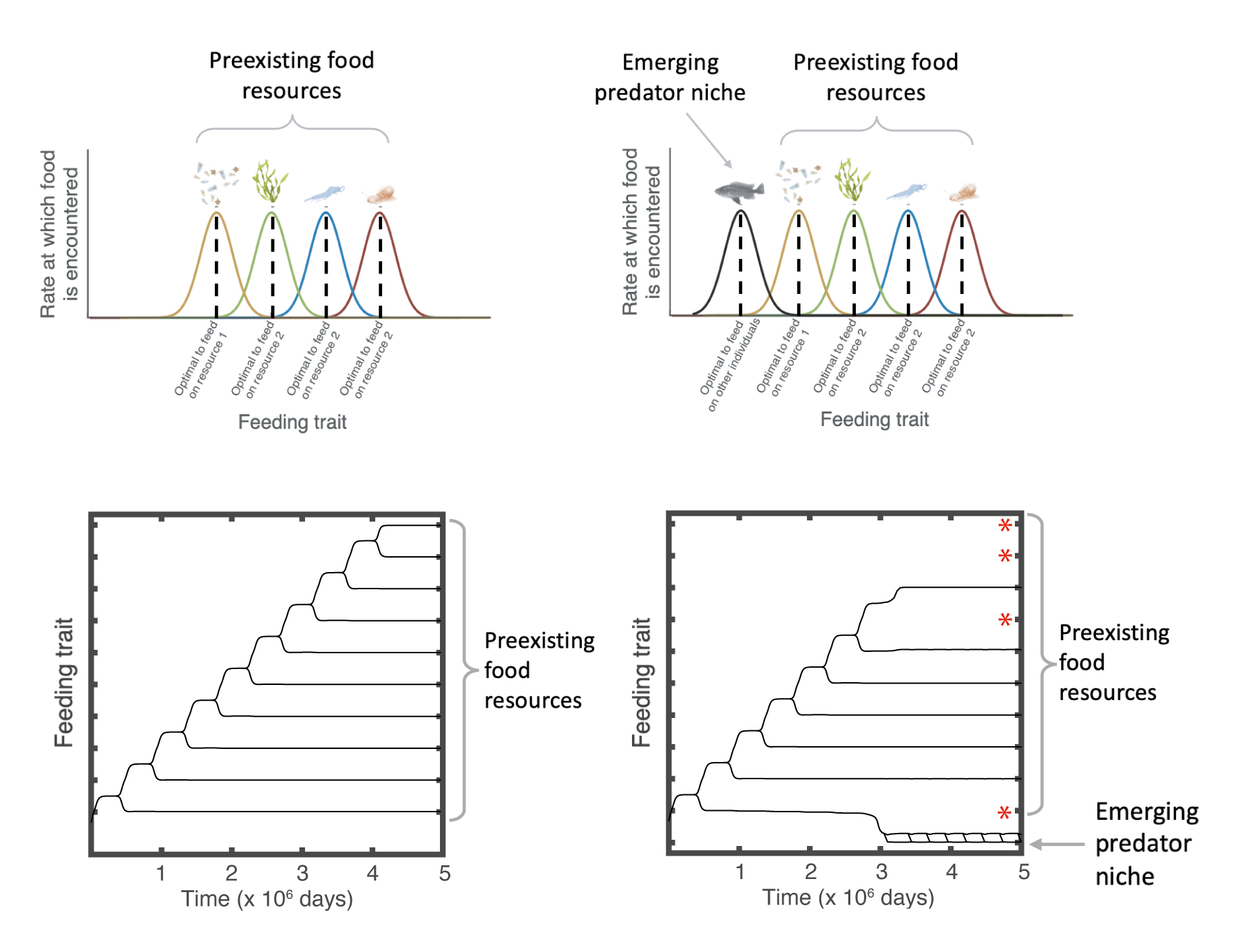Origin of biodiversity through ecological diversification
Ecological diversification is thought to have given rise to much of the diversity of life on Earth. To understand the origin of biodiversity, it is therefore fundamental to identify the factors facilitating or constraining ecological diversification.
The extraordinary diversity of life on Earth has emerged through a variety of biological processes. One of these is ecological diversification, which is thought to have given rise to much of this diversity. This process, in which a single ancestral population diversifies into ecologically different species that exploit a variety of niches, has produced several diverse adaptive radiations including Darwin’s finches, Caribbean anole lizards, and cichlid fishes. To understand the origin of biodiversity, it is therefore fundamental to identify the factors facilitating or constraining ecological diversification. My research seeks to advance our understanding about how ecological interactions and developmental processes affect ecological diversification.
The emergence of predators in adaptive radiations
Adaptive radiations are known for rapid diversification of a single ancestral species into an array of species exploiting a variety of ecological niches. Most niches usually exist prior to the arrival of the ancestral species and are filled as the colonist population begins to diversify into a clade. Novel niches may additionally emerge as a clade diversifies. For example, species that feed upon other members of the clade have been observed in the African Lake cichlid radiations, the Bahamas Cyprinodon pupfish radiations, and the Lake Baikal amphipods radiation. Prey-predator interactions have therefore emerge as these radiations unfold. Using an eco-evolutionary model, we showed that, contrary to previously hypothesized, the emergence of these interactions hinders the diversification process, and thus the ensuing diversity in adaptive radiations (Chaparro-Pedraza, P.C. et al, 2022).

Individual variability in survival
Individual variability in survival is widespread in nature. The general rule is that larger organisms have a greater chance of survival than smaller conspecifics. Using an eco-evolutionary model of diversification that considers individual variability in mortality, I show that commonly observed differences in mortality between juveniles and adults can facilitate diversification. In particular, diversification is expected to be less restricted when juveniles experience higher mortality. This work is among the first to investigate how diversification is influenced by ecological differences between developmental stages, arguably the largest source of intraspecific variation in nature (Chaparro-Pedraza, P.C., 2024).